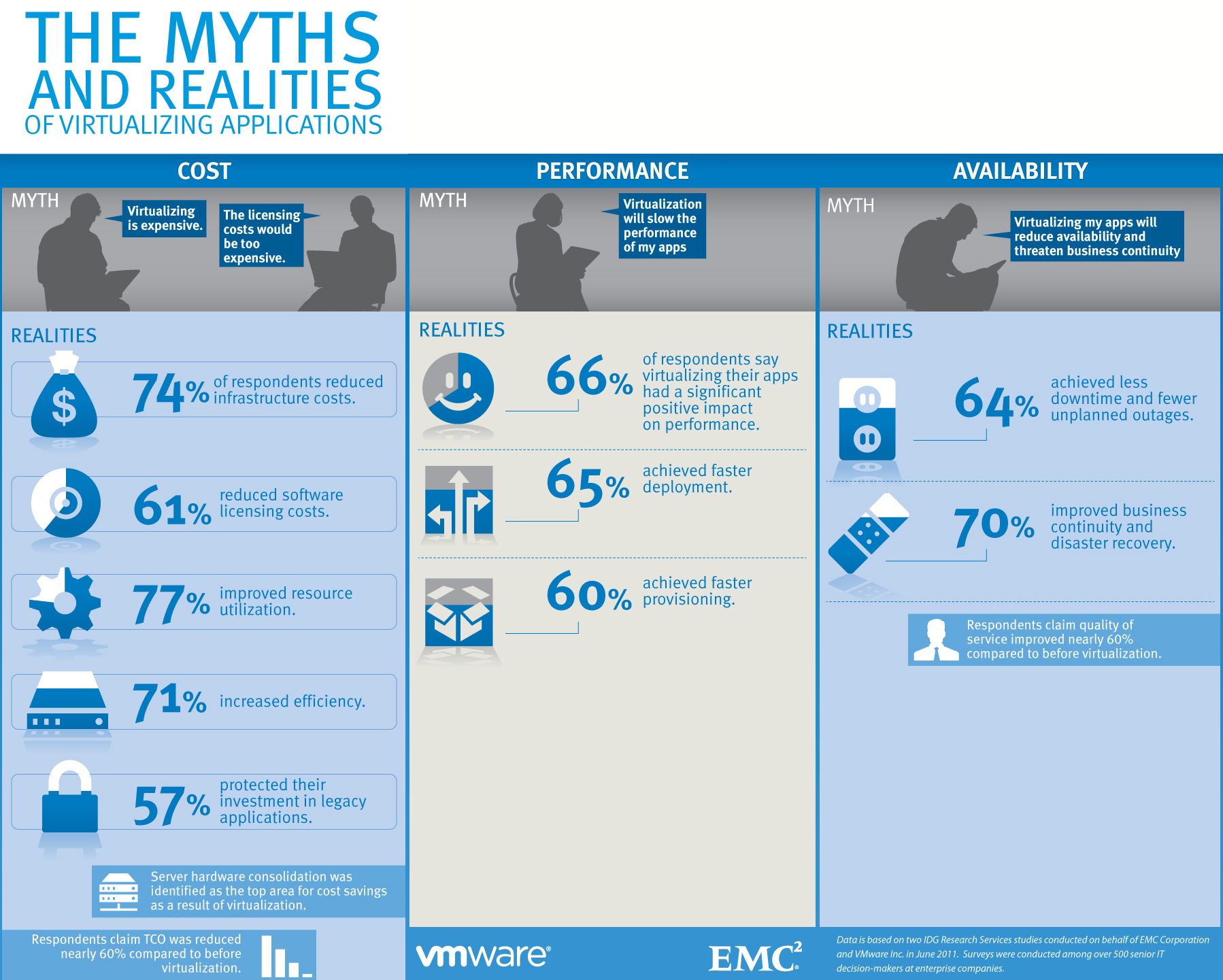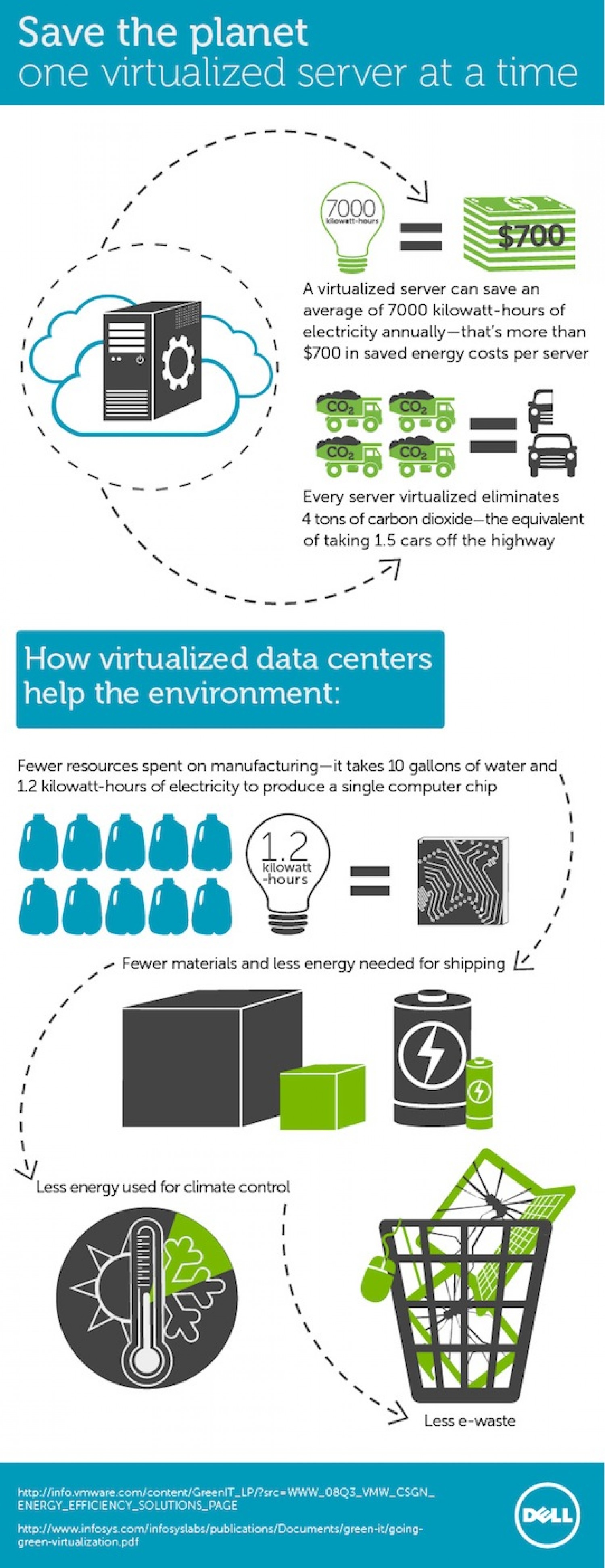Using Hardware from Trusted Manufacturers Such As:



How Virtualization Works
In a "normal" server set up, you might have one server for each database or ongoing process, as many such products require complete isolation from other tasks and programs, and keeping them so is good practice for security as well. But as the needs of your company grow, you may need more servers for more processes, or your database may become too large to contain on the modest server you purchased originally. Hardware becomes obsolete. Redundency becomes necessary. Servers must be constantly maintained, monitored and upgraded, because anything less than best performance will affect the success of your business.
In a virtual server, you can have a physical server with much more capacity and capabilityhosting several virtual servers in parallel. None of these guest servers has any interaction with the others and are still kept in isolation. A single program, called a hypervisor, manages the needs and resources of all of the virtual servers in the same physical space. Rather than having an entire room full of servers taking up space and taxing your cooling and energy infrastructure, you can have a small handful of servers or even only one.
But even virtual severs require knowledgable staff to manage them, even though much of the overhead is removed. Let Pleasant Solutions worry about set up, transfer, upgrades, and all of the other logistics of keeping virtual servers. You can rest easily knowing that even in case of an emergency, we'll keep your critical data safe and secure.



